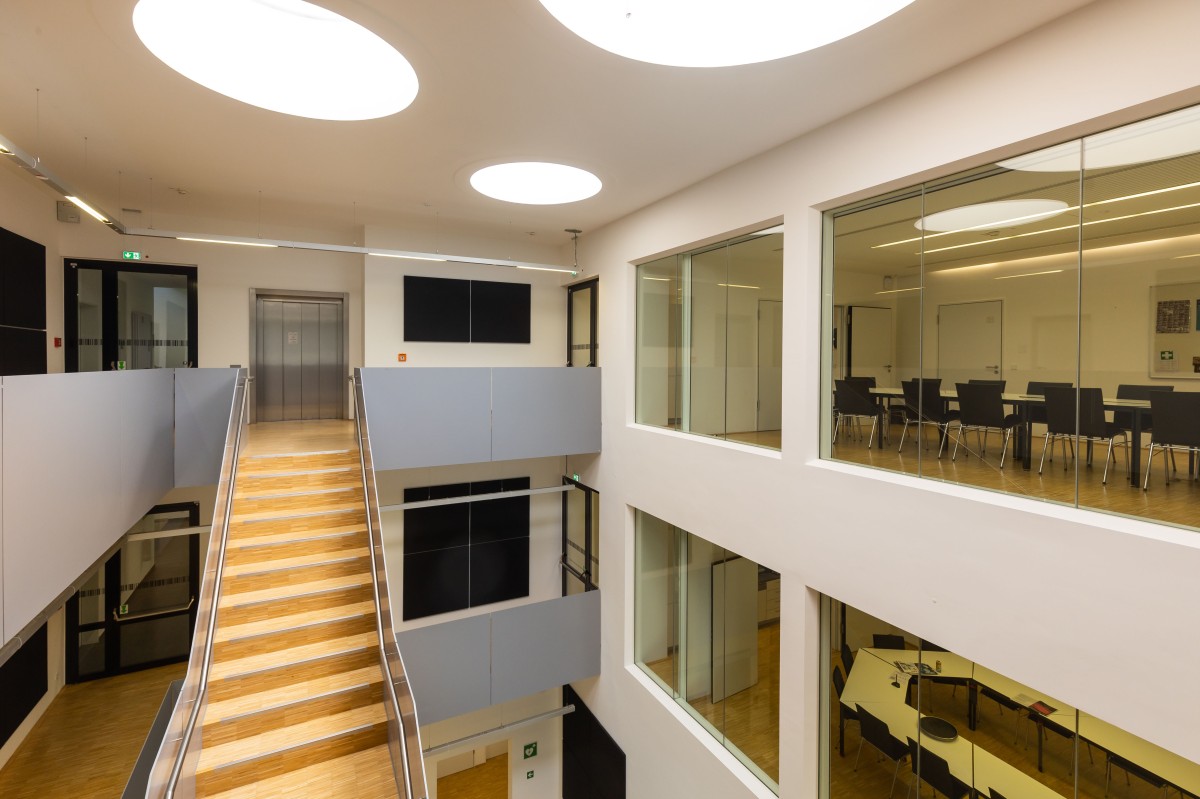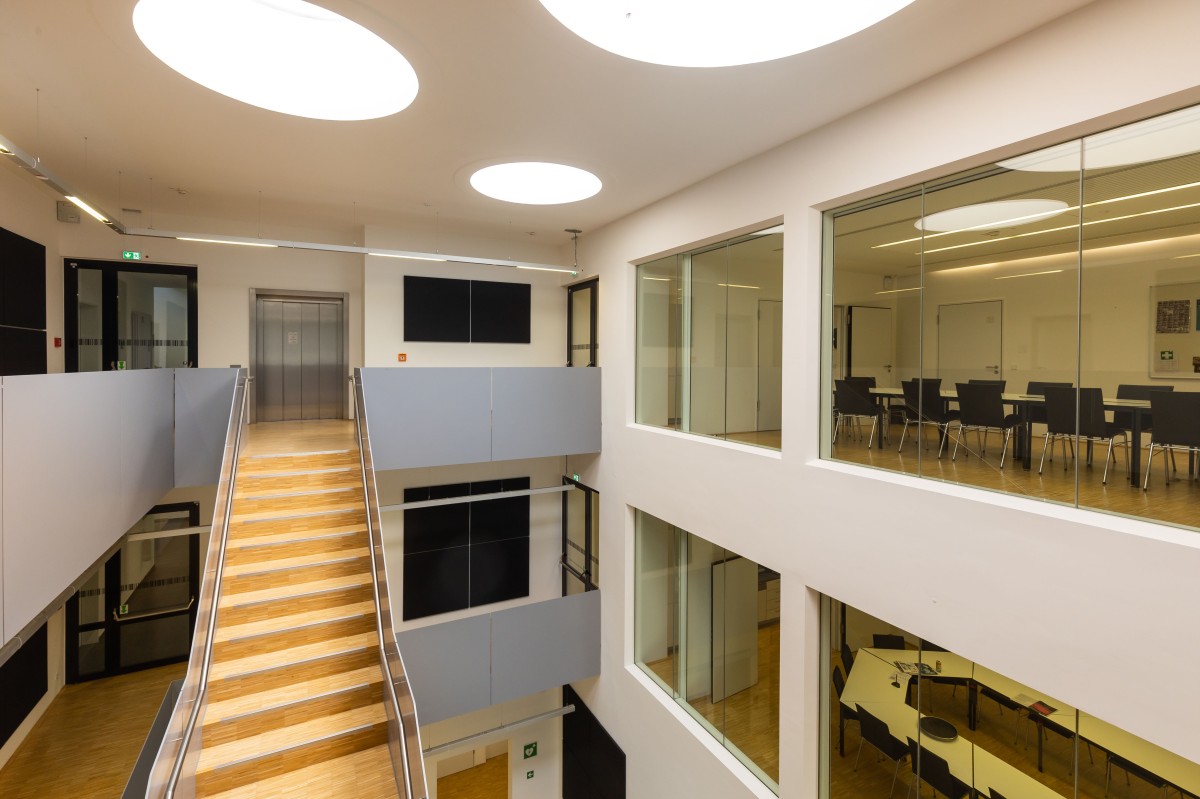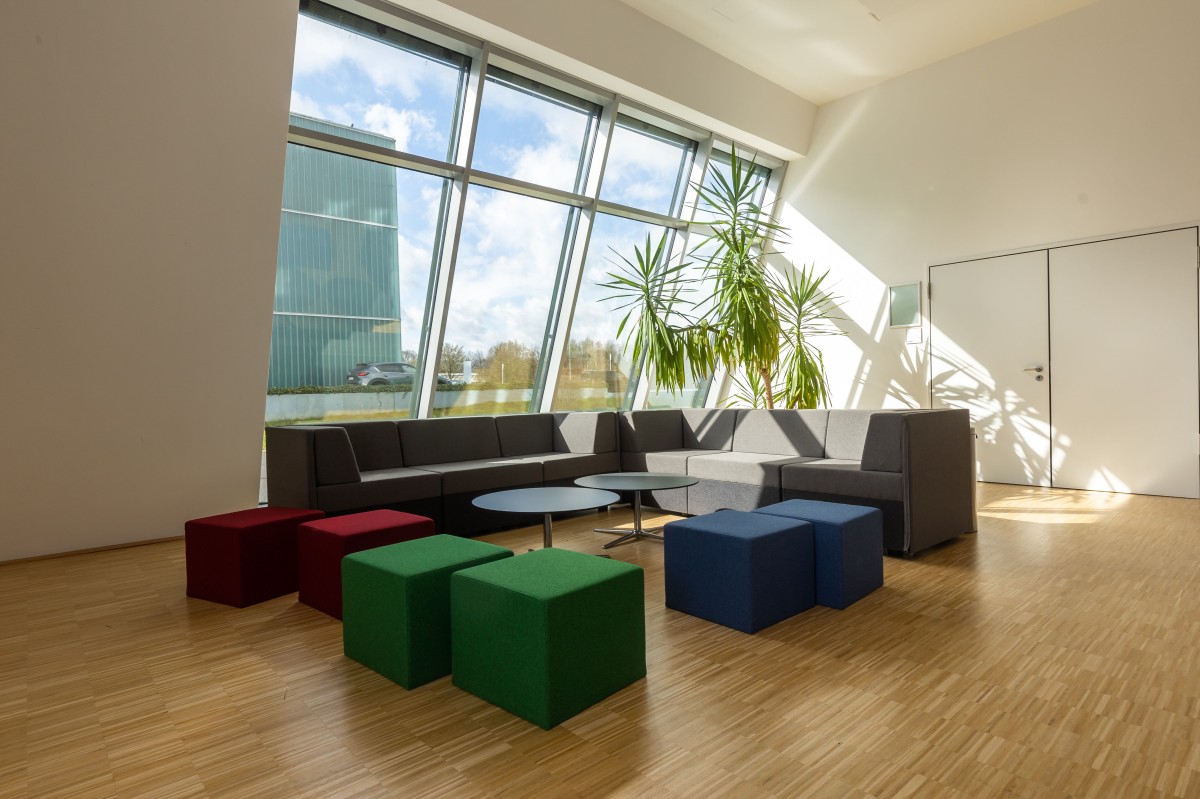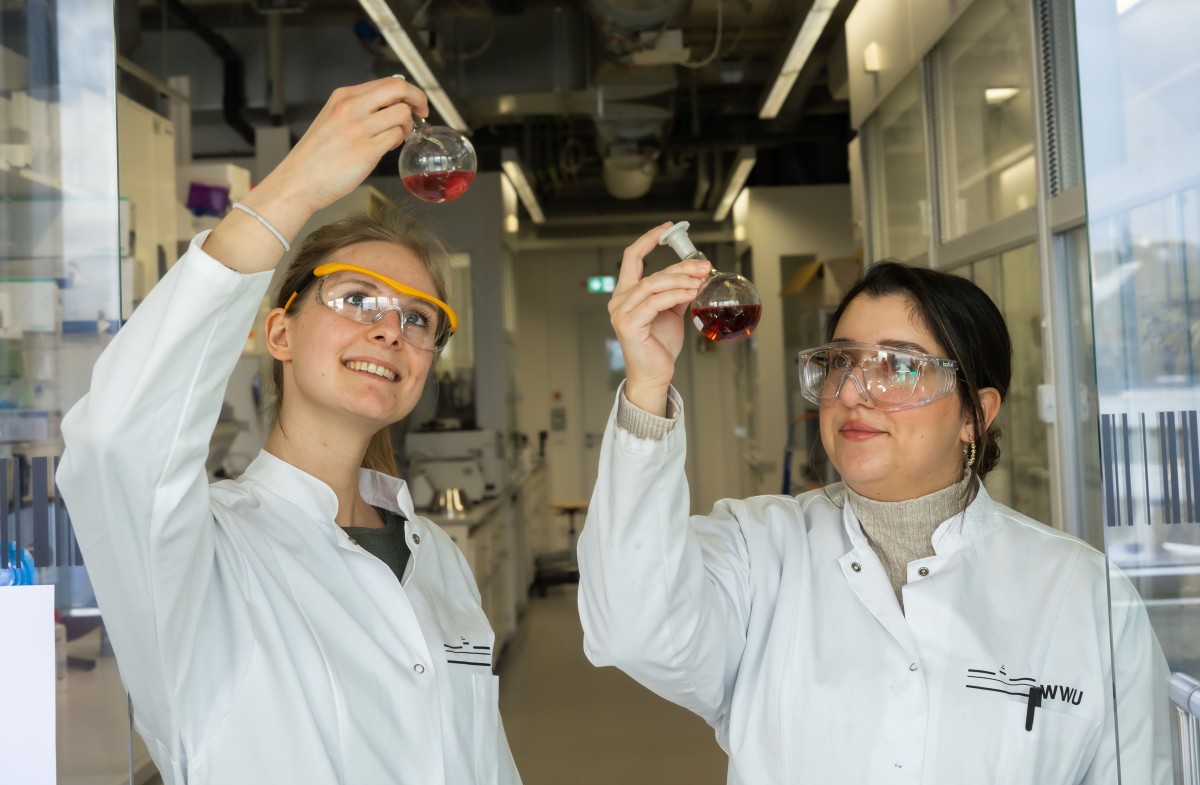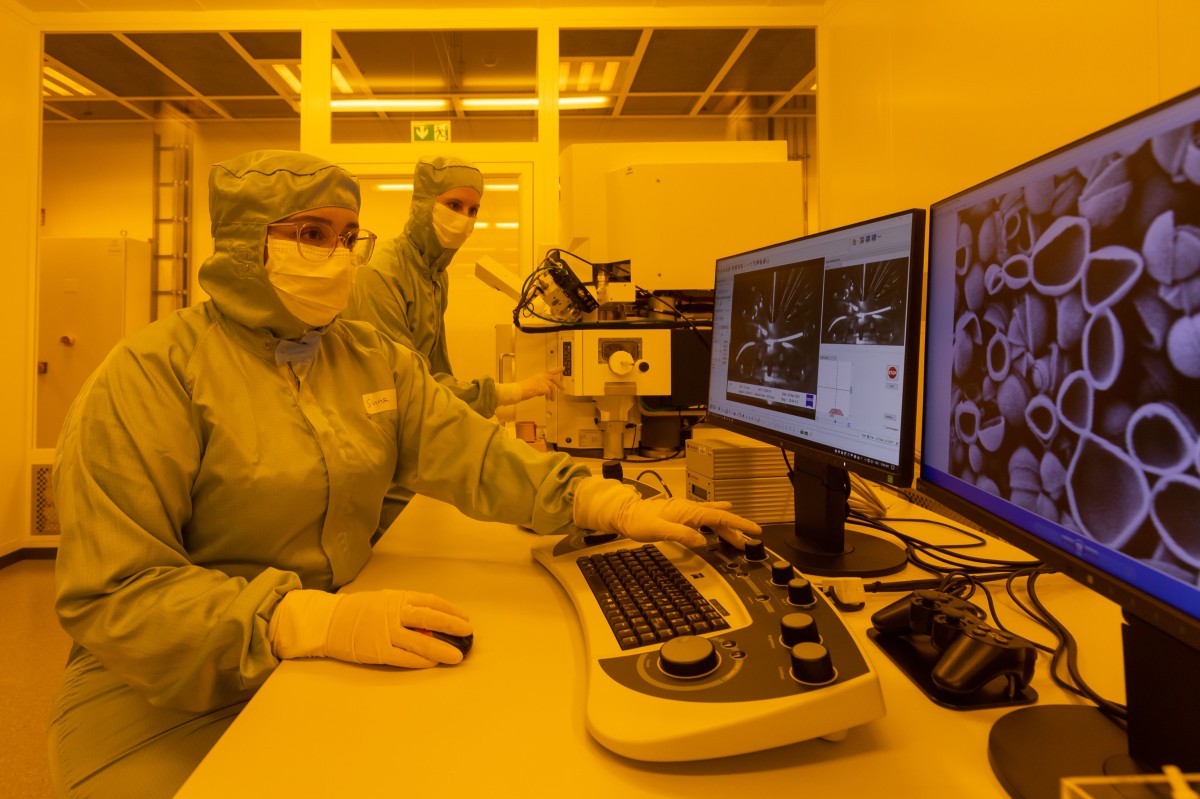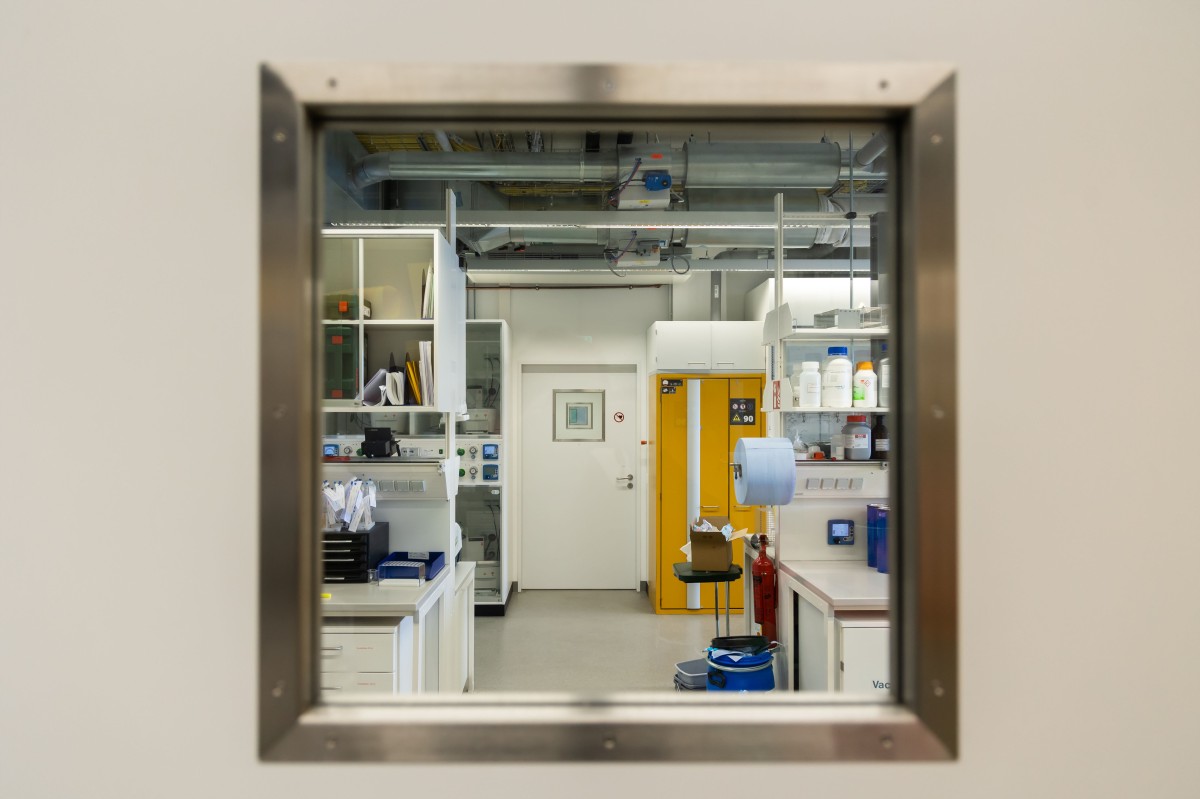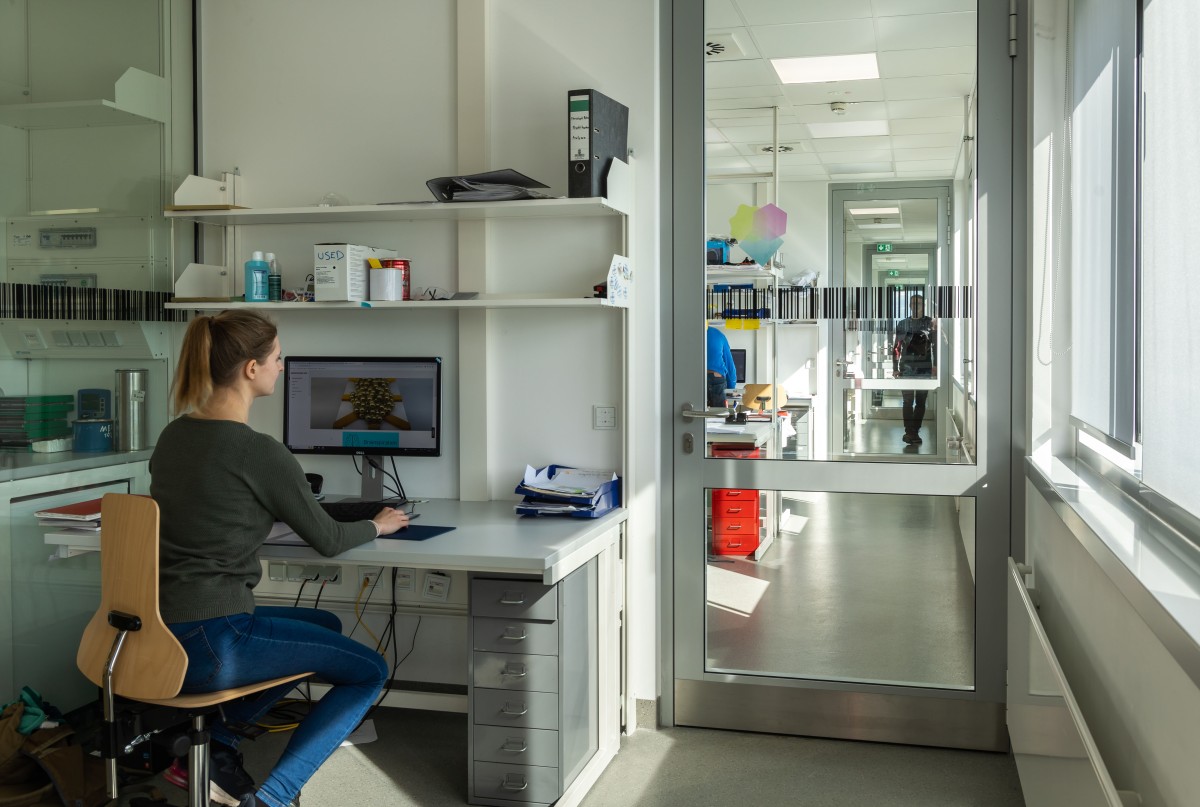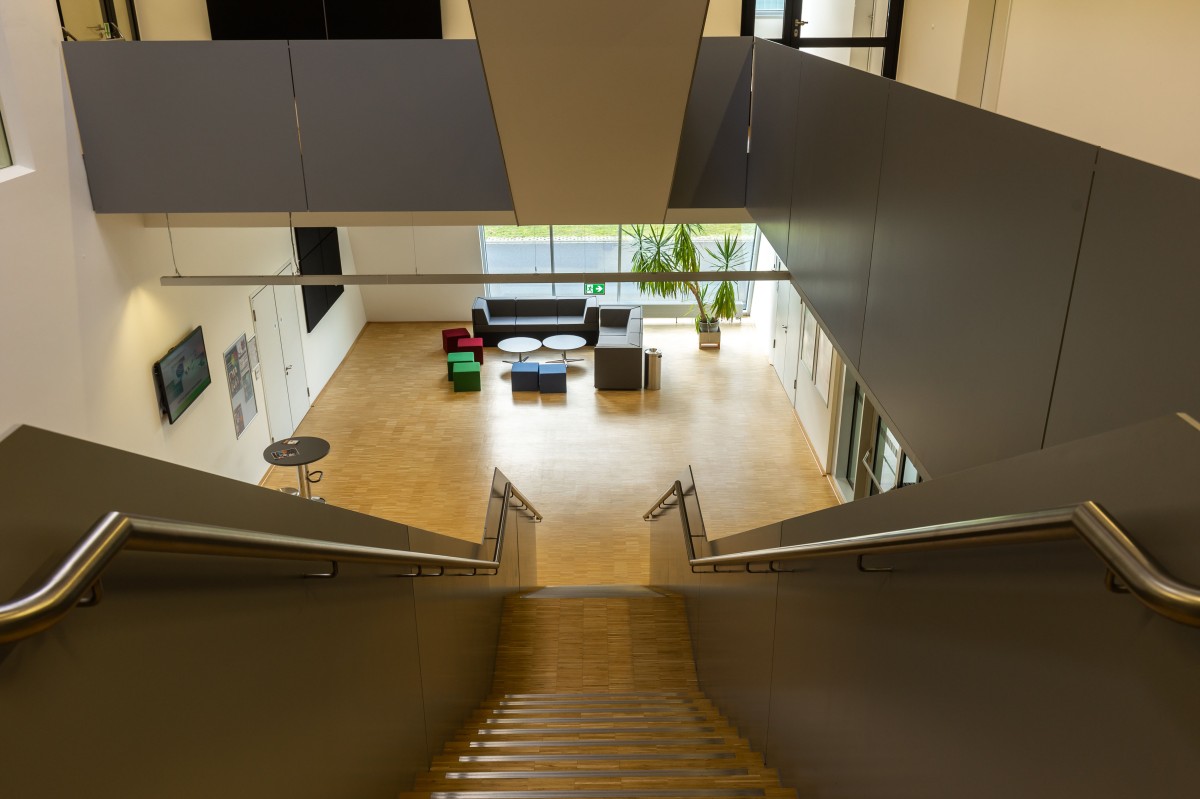
When interdisciplinary collaboration begins with the architecture
It is bright, functional and interdisciplinary: the Center for Soft Nanoscience (SoN) at the University of Münster is a high-tech research building for the nano-sciences. Here, 32 teams from the fields of physics, chemistry, biology and medicine do their work using high-precision nano-analytical methods. What’s special about this is that the scientists carry out their research together under one roof, in Busso-Peus Straße, investigating how nano-materials with complex properties and functions are produced in nature – and with the aim, taking nature as their model, of themselves producing nano-materials or designing controllable ones. The interdisciplinary approach to research taken at SoN is reflected in every corner of the building, which was officially opened in late 2018 after almost two and a half years of construction work.
“The architecture of the building is spacious, open and transparent,” says Dr. Michael Seppi, who is responsible for the building at SoN. “Everything is suffused with light and, apart from the labs, there are not many thick, solid walls.” On each floor with offices, for example, there is a meeting room with an integrated kitchen. As a result of the glazing towards the atrium, it is possible to look into the rooms from every angle. “This structure makes it easier for people to come together and it promotes communication in our everyday work,” Seppi adds. “It’s virtually impossible for us to avoid one another or slip away.”
The design for the rectangular research building was made by the Kresings architectural practice in Münster. In the architects’ words, the 100 metre long SoN is designed to have the effect of a “piece of technical apparatus”: shiny silver, smooth, functional and dynamic as a result of the slanting façade on the south side. In contrast to this is the other end of the façade, which is surrounded by a grassy knoll which isolates the inner area from external influences such as fluctuations in temperature. The special architectural design, as well as the inclusion of vibration-free floors and protection from disruptive magnetic fields, make it possible to operate highly sensitive measuring equipment with atomic resolution such as the recently inaugurated cryogenic electron microscope – which would otherwise have to be installed out of the way in the cellar. On total floorspace of almost 8,000 square metres, there are also state-of-the-art laboratories for chemistry, biology and physics work, and a fully equipped cleanroom and further microscopic and nano-analytical measuring equipment. In the slanting end of the façade, at the entrance, there is a glass atrium which, with its cosy lounge area, provides a further communication zone.
The potential for interdisciplinary collaboration can also be seen in the labs – because whereas standard labs only have one window, in the door leading to the corridor, the rooms in SoN are also linked to one another by windows. This enables the researchers to look into the lab next door during their work. Behind the labs there is a documentation zone in which research results can be written down at computer workstations. “The individual areas in the zone are likewise connected through glass doors, which means that you can see from one end to the other,” says Michael Seppi. That promotes communication between the working groups from the different disciplines, he adds.
Researchers all over the world benefit from this, as do junior researchers. “What I especially like at SoN is the fact that we come from a variety of research areas and work together in labs side by side,” says Suna Azhdari, who is working on a double PhD in Chemistry at the Universities of Münster and Twente. She is doing research into biodegradable polymers on a polyphosphoric ester basis. “If I have a question outside my particular field, I just go next door and ask who can help me in the working group there,” she explains. “Small-scale collaboration already takes place,” adds chemist Lisa Schlichter, who is writing her doctoral dissertation in the “Intelligent Matter” Collaborative Research Centre group, headed by Prof. Bart Jan Ravoo, and is investigating the self-assembly of nano-particles for brain-inspired systems. “Also, there is lots of measuring equipment available at SoN, with acknowledged experts on-hand to operate it,” she says, “and they can give advice, for example, on whether it makes sense to use it to analyse our own samples.”
Both the cleanroom and the high-tech equipment park in the Münster Nanofabrication Facility (MNF) are used by people from a variety of disciplines such as Physics, Chemistry, the Geosciences and Biology. As a central university institute within SoN, the MNF can be used by researchers from both inside and outside the University.
Outside daily laboratory work, colloquia and seminars are held regularly for everyone for the purpose of promoting scientific discussions. The weekly “fruit break” is especially popular – and no wonder: it is not only an opportunity to talk to other people, but there is also fresh fruit on offer at the meetings in the atrium in the entrance.
Nano-analytics workshop
Anyone interested in learning more about the (measuring) equipment at the MNF can attend the Nanoanalytics Workshop on Tuesday, May 16 from 1 to 5 pm at SoN. There will not only be short talks but also an opportunity to take part in discussion sessions. The workshop is interdisciplinary and is aimed at researchers from the fields of Physics, Chemistry, the Geosciences, Biology and Medicine.

